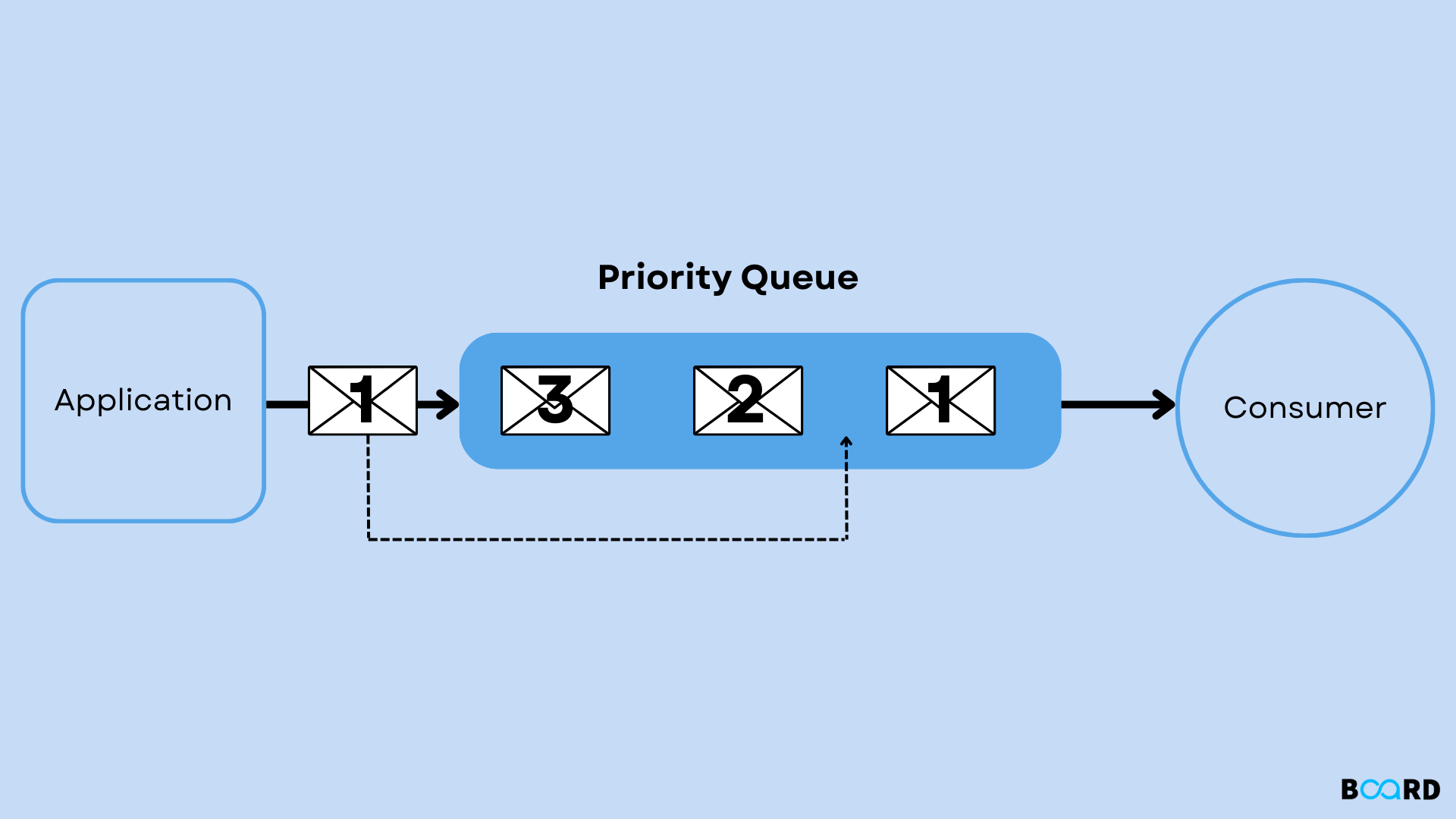Priority Queue Data Structure
Introduction to Priority Queue
A priority queue is an abstract data type that operates similarly to a regular queue or stack, but each element is assigned a priority. In a priority queue, elements are served based on their priority rather than the order in which they were added. This means that elements with higher priority are processed before those with lower priority.

Priority Queue Operations
- Insert: Add an element to the priority queue with a specified priority.
- Remove: Remove and return the element with the highest priority.
- Peek: Retrieve the element with the highest priority without removing it.
- isEmpty: Check if the priority queue is empty.
- Size: Get the number of elements in the priority queue.
Pseudocode
Basic Operations
-
Insert:
function insert(priorityQueue, element, priority):
priorityQueue.append((element, priority))
sort(priorityQueue) // Sort by priority -
Remove:
function remove(priorityQueue):
if isEmpty(priorityQueue):
return "Priority Queue Underflow"
return priorityQueue.pop(0) // Removes the element with highest priority -
Peek:
function peek(priorityQueue):
if isEmpty(priorityQueue):
return "Priority Queue is empty"
return priorityQueue[0] // Highest priority element -
isEmpty:
function isEmpty(priorityQueue):
return len(priorityQueue) == 0 -
Size:
function size(priorityQueue):
return len(priorityQueue)
Implementation in Python, C++, and Java
Python Implementation
class PriorityQueue:
def __init__(self):
self.elements = []
def insert(self, element, priority):
self.elements.append((element, priority))
self.elements.sort(key=lambda x: x[1]) # Sort by priority
def remove(self):
if self.is_empty():
return "Priority Queue Underflow"
return self.elements.pop(0) # Highest priority element
def peek(self):
if self.is_empty():
return "Priority Queue is empty"
return self.elements[0] # Highest priority element
def is_empty(self):
return len(self.elements) == 0
def size(self):
return len(self.elements)
# Example usage
pq = PriorityQueue()
pq.insert("Task 1", 2)
pq.insert("Task 2", 1)
print(pq.remove()) # Output: ("Task 2", 1)
print(pq.peek()) # Output: ("Task 1", 2)
print(pq.is_empty()) # Output: False
print(pq.size()) # Output: 1
C++ Implementation
#include <iostream>
#include <vector>
#include <algorithm>
class PriorityQueue {
private:
std::vector<std::pair<int, int>> elements; // Pair of (element, priority)
public:
void insert(int element, int priority) {
elements.push_back({element, priority});
std::sort(elements.begin(), elements.end(), [](auto &a, auto &b) {
return a.second < b.second; // Sort by priority
});
}
std::pair<int, int> remove() {
if (is_empty()) {
std::cerr << "Priority Queue Underflow" << std::endl;
return {-1, -1}; // Indicating underflow
}
std::pair<int, int> highestPriority = elements.front();
elements.erase(elements.begin());
return highestPriority;
}
std::pair<int, int> peek() {
if (is_empty()) {
std::cerr << "Priority Queue is empty" << std::endl;
return {-1, -1}; // Indicating empty
}
return elements.front();
}
bool is_empty() {
return elements.empty();
}
int size() {
return elements.size();
}
};
// Example usage
int main() {
PriorityQueue pq;
pq.insert(1, 2);
pq.insert(2, 1);
auto task = pq.remove(); // Output: (2, 1)
std::cout << "Removed: " << task.first << " with priority: " << task.second << std::endl;
task = pq.peek(); // Output: (1, 2)
std::cout << "Next: " << task.first << " with priority: " << task.second << std::endl;
std::cout << std::boolalpha << pq.is_empty() << std::endl; // Output: false
std::cout << pq.size() << std::endl; // Output: 1
return 0;
}
Java Implementation
import java.util.ArrayList;
import java.util.Collections;
import java.util.Comparator;
public class PriorityQueue {
private ArrayList<Pair> elements;
public PriorityQueue() {
elements = new ArrayList<>();
}
public void insert(int element, int priority) {
elements.add(new Pair(element, priority));
Collections.sort(elements, Comparator.comparingInt(pair -> pair.priority)); // Sort by priority
}
public Pair remove() {
if (is_empty()) {
System.out.println("Priority Queue Underflow");
return null; // Indicating underflow
}
return elements.remove(0); // Remove highest priority
}
public Pair peek() {
if (is_empty()) {
System.out.println("Priority Queue is empty");
return null; // Indicating empty
}
return elements.get(0); // Highest priority element
}
public boolean is_empty() {
return elements.isEmpty();
}
public int size() {
return elements.size();
}
// Pair class to hold element and priority
private class Pair {
int element;
int priority;
Pair(int element, int priority) {
this.element = element;
this.priority = priority;
}
}
// Example usage
public static void main(String[] args) {
PriorityQueue pq = new PriorityQueue();
pq.insert(1, 2);
pq.insert(2, 1);
Pair task = pq.remove(); // Output: Pair with element 2
System.out.println("Removed: " + task.element + " with priority: " + task.priority);
task = pq.peek(); // Output: Pair with element 1
System.out.println("Next: " + task.element + " with priority: " + task.priority);
System.out.println(pq.is_empty()); // Output: false
System.out.println(pq.size()); // Output: 1
}
}
Complexity
-
Time Complexity:
- Insert: (due to sorting)
- Remove: (removing the first element)
- Peek:
- isEmpty:
- Size:
-
Space Complexity: , where is the number of elements in the priority queue.
Example
Consider a priority queue with the following operations:
- Insert Task 1 with priority 2
- Insert Task 2 with priority 1
- Remove the highest priority task
- Peek at the highest priority task
- Check if empty
- Get size
Operations:
- Insert Task 1 (priority 2): Queue becomes [(Task 1, 2)]
- Insert Task 2 (priority 1): Queue becomes [(Task 2, 1), (Task 1, 2)]
- Remove: Removes Task 2 (priority 1), Queue becomes [(Task 1, 2)]
- Peek: Returns Task 1 (priority 2), Queue remains [(Task 1, 2)]
- isEmpty: Returns false
- Size: Returns 1
Conclusion
A priority queue is a powerful data structure used in scenarios where elements need to be processed based on priority rather than order. It is commonly used in algorithms such as Dijkstra's shortest path algorithm, Huffman coding, and various scheduling algorithms. Understanding and implementing priority queues effectively can significantly improve the efficiency of your algorithms.